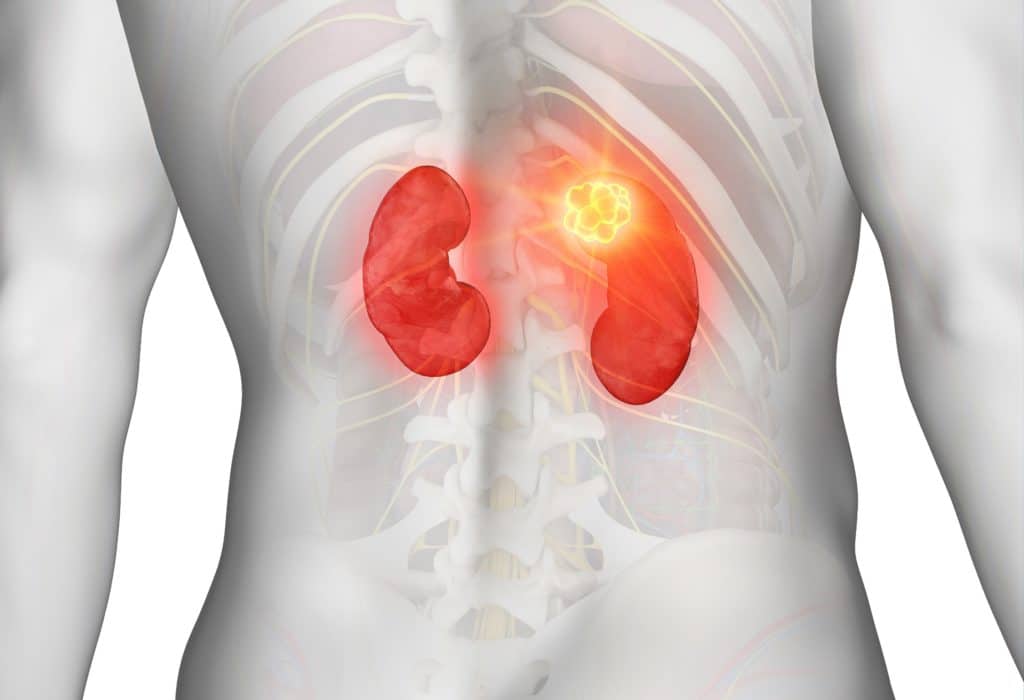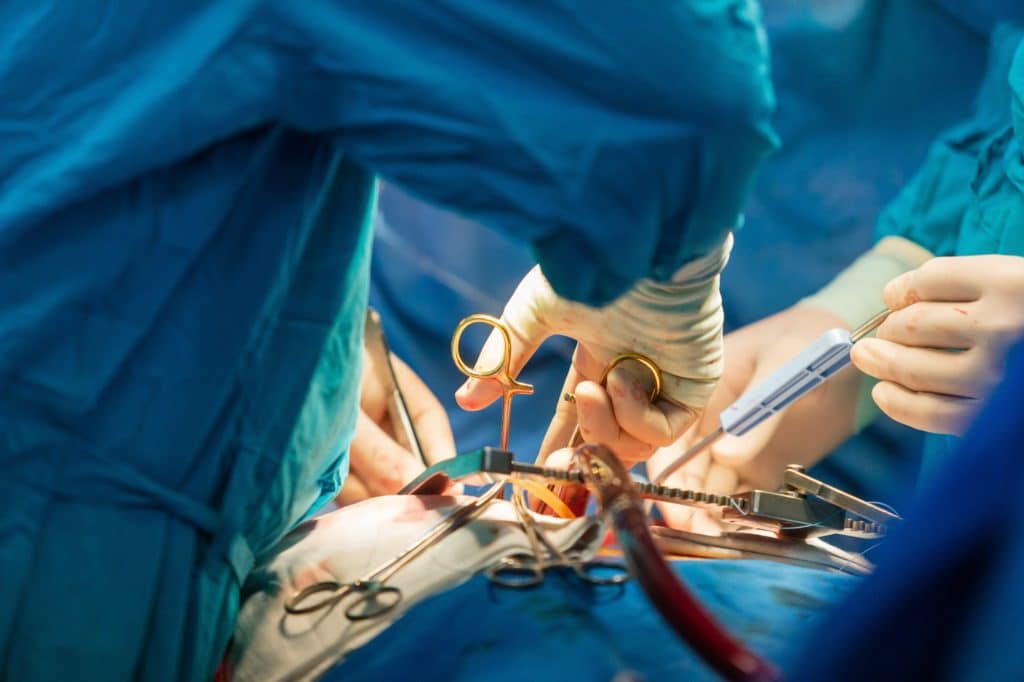Benign kidney tumors and kidney cancer
Is detected in the kidney, a renal tumor, is the distinction, whether it is a benign or malignant new tissue formation, is of crucial importance for treatment and prognosis. More and more frequently ulcers in the kidney can be detected during screening examinations are more random. This increases the chances for early detection, because the often lack of or rather non-specific symptoms make the diagnosis more difficult. While benign tumours do not remain untreated rarely without other health problems, is to treat the much more frequently occurring malignant cancers of the kidney as quickly as possible. In most cases, surgery is necessary.
Table of contents
A brief Overview
Tumors in the kidneys and cause in the early stages often have no symptoms. Nevertheless, there are serious disorders that need to be carefully and may be quickly treated and diagnosed. Read the following Overview of the most important facts and inform yourself in the other articles comprising this kidney disease.
- Definition: The definition of renal tumor, referred to first of all benign and malignant tissue neoplasms of the kidney or of the renal pelvis. In the further classification of different types of benign tumors and various cancer types are distinguished, which also differ in their possible side-effects and the necessary therapy approaches.
- Symptoms: Often occur at the beginning, no complaints and it comes in the course of various General symptoms. Rarely, and if only in a later stage of the disease, the typical Symptom triad of flank pain, blood in the urine, and palpate the ulcer.
- Causes: The causes are not adequately resolved. As precipitating factors, tobacco consumption, Obesity (obesity), primary diseases of the metabolism and Hormone balance, adverse effects caused by drugs or environmental factors and a certain amount of pre-load due to hereditary components, however, apply.
- Diagnosis: In most cases, renal tumors during ultrasound examination detected. For further diagnosis laboratory tests of blood and urine samples, as well as, possibly, other imaging techniques is necessary.
- Treatment: the ulcers are benign, it is necessary only in the case of large extents, or other expected problems of a treatment. Renal cancer, however, must always be treated as soon as possible for a good Chance of complete cure. In General, there is a surgical removal of the carcinoma and possibly also the kidney or parts of the kidney. A few other Alternatives, such as treatment with drugs that are not yet standard therapy.
- Naturopathic treatment: To strengthen the Psyche and the body, complementary healing methods, therapy support and overall well-being of the Affected improve.

Definition
Under the term of renal tumor all benign (benign) and malignant (malignant) of neoplasms (neoplasms) of the kidney or of the renal pelvis Tissue combined. In more than ninety percent of the disease cases, however, are malignant tumors that are commonly referred to as kidney cancer. The most common Form presents in adulthood (usually between the fortieth and sechzigstem years of age), the so-called renal cell carcinoma (Hypernephroma). In this disease, most of the cases, is affected in only one kidney.
But other forms can occur, such as the renal pelvis carcinoma (urothelial carcinoma) or the particularly in childhood, widespread, Nephroblastoma, also under the name of Wilms ‘ Tumor is known. Wilms ‘ tumors are manifested already at the embryonic stage, and then mainly between the first and fifth year medical striking. Considering the frequency of types of cancer in children, Wilms Tumor, with an incidence of about five per cent is a relatively common disease.
A total of kidney tumors (in adults) diseases are considered to be rather rare cancer. The renal cell carcinomas, however, show a tendency to increase in occurrence. Affects men to women about twice as often.
Much rare benign neoplasms, which are classified according to their predominant tissue composition occur. Among the most common symptoms fibromas (connective tissues), adenomas (mucous membrane and glandular tissue), angiomas (blood vessels), and lipomas (fatty tissue), for example. But there are also mixed forms, such as the Angiomyolipom, to vessels which a high proportion of blood and fat tissue. In the case of larger Adenomas, it is known that it can also lead to a malignant degeneration, therefore, the rates of increased attention.
In contrast to the malignant forms of benign tumors grow in the majority of cases very slowly, and only lead to a displacement of other tissues, but not to its destruction. Thus, a significant reduction of aggression and health risk is shown.
Symptoms
In the benign renal tumors, no symptoms occur in the rule. Sometimes it is only reported from a pressure in the kidney area (kidney pain) or edge. Therefore, these welded are not tumors also rarely only accidentally discovered. In the case of particularly tall tumors bleeding can be caused, or of the urinary drainage may be impeded.
Also in the case of kidney cancer, particularly in the early stages, the disease often in the absence of (clear) complaints. Only about ten percent of the Concerned, it actually comes to the three typical signs:
- Flank pain,
- Blood in the urine,
- tactile ulcer.

Complaints to the water to appear, it is already kidney problems or diseases of the urinary tract.
These include vague pain in the back can come in the flanks, in the kidney stock, and in the Abdomen without other findings. Show also rather non-specific General symptoms such as increased temperature or fever, fatigue, loss of appetite and weight loss, the symptoms should be clarified always medical, kidney cancer be excluded.
In the Nephroblastoma, the symptomatology is similar and is also often unclear. In most cases, a bulging “thick” belly, can be found in the children, but only rarely, this can also be brought at an early date in the appropriate context.
Malignant cancer cells spread to form secondary tumours, called metastases, can be drawn to other organs and structures affected. Thus, it can also come elsewhere to complaints and malfunctions. The list of possibilities is very long.
Causes
The causes for the formation of benign tumors in General are not yet fully understood. In some cases, a certain hereditary predisposition seems to be present. But also other influences such as medications, environmental factors, and an increased age to be eligible.
Also in the case of cancer of the kidney diseases, there is no clearly defined causal relationships. As in the case of benign neoplasms, it seems that with the tumors in adulthood is an increased age to play a role. As a further precipitating factors, unhealthy lifestyles (Smoking and obesity), cancer-causing environmental substances, and hormonal changes.
In some cases, the development of renal carcinoma can be attributed to chronic renal failure or in direct connection with hereditary components. It is the evidence that a mutation in a specific Region of the chromosome 3 disease to an increased risk for kidney cancer. Such a known hereditary disease the von Hippel-Lindau disease (VHL), in the case of the tumors in the cerebellum and on the back of the eye to develop, but it comes with an increased probability for the formation of renal cell carcinoma.

Diagnosis
Due to the often lack of or unclear signs of the disease in many cases, to a random diagnosis. Thus, tumors of Kidney are increasingly common in ultrasound examinations, discovered that be carried out on the basis of other indications. Meanwhile, particularly the screening is attributed great importance in the early detection and improved chances of recovery of renal tumors in the course.
The suspicion of a renal tumor, with or without typical symptoms, can be induced in General, further investigations, in particular to the Well or malignancy of cell multiplication. The computer tomography (CT) as the most frequent imaging method used. In addition to the confirmation, whether it is cancer or a benign Tumor, the images also shed light on the current tumor size and possible metastases in the examined area of the body. In addition, suspected cases can be identified turn out to be unfounded, or there are other (kidney) complications. In individual cases, a sample from the Tumor by means of Stanzbiospie is out of the question, in order to clarify the malignancy of the tissue.
The magnetic resonance imaging (MRI) can be consulted under certain circumstances, to a detailed diagnosis. Only rarely, and in many cases, rather in preparation for a surgical procedure, performed an angiography, which allows the blood vessels and assess the blood supply to the kidney and the tumor tissue.
In General, tests are performed to complete the diagnostic analyses of blood and urine, can provide clues to the kidney functions or other related factors. Is safety of kidney cancer, are often prompted further investigations, the degree of a possible metastasis to detect and early treat. Metastases on the basis of the kidney are found most frequently in the lungs, skeleton, liver and brain.

Treatment
In the case of many benign and asymptomatic ulcers, no specific therapy is required. The tumors, however, show a very large extent, are expected to, among other things, by the pressure on the surrounding organs and structures, as well as their extrusion difficulties. For discharge to a surgical procedure is performed in these cases.
No contra-indications, be taken from the Affected malignant tumors usually of the pathological tissue and parts of the kidney or even the entire Organ. The way of the procedure depends on the respective stage, i.e. in particular, the tumor size and the metastasis. Not always have to be made a large incision in the abdomen or flank, under certain circumstances, are also minimally invasive surgical or ablative procedures are possible. In laparoscopic surgery or cryotherapy (freezing treatment) to be used.
In the case of smaller tumors, in particular, if only one kidney is present, or about both kidneys are affected, every effort is made to body received therapy. The Tumor could be removed at an early stage, survival, many patients with only one functioning kidney and are considered long-term as cured.
The well-known cancer forms of therapy – Radiation therapy and chemotherapy – no achieve in the case of malignant kidney tumors have a significant success. Metastases are already present, but it weighed a surgical procedure precisely. In such an advanced stage, then radiation therapy can be in the first line for the treatment of metastases and accompanying pains. In addition, pain pills or morphine, come here, (in the case of very severe pain) to the application.
A possible, but controversial, Alternative in renal cell carcinoma inhibitors offers for some time, a drug therapy using tyrosine kinase. The active ingredient used under the supply of the tumor tissue with oxygen and nutrients binds and inhibits active growth of tumor cells. In the last few years, has blockers, in contrast to this, in addition, a combined immunotherapy with two so-called check point as a potentially better form of therapy proved in the medical journal The New England Journal of medicine was reported. Generally, it is expected in the case of two resources, not a complete cure, and the methods do not belong to the standard therapy.
In any case, even after successful treatment, regular follow-up appointments should be adhered to. In addition to a possible disease recurrence (even after years) are also taken into account possible complications and late consequences for the investigations, mainly the development of renal insufficiency and hypertension count.

Naturopathic Treatment
Alternative or complementary healing diseases of many of the Affected at the tumor considered. Often a strong feeling of uncertainty arises in the case of the Ill through the change of Life after the diagnosis of cancer and the available, sometimes very drastic, Orthodox medical treatment options and prognoses. Similarly, there is a variety of alternative healing methods for cancer, which are referred to in the natural healing practice as a biological cancer therapy – under the application of various remedies.
The areas of supportive therapy methods relate to the strengthening of the Psyche (for example by means of relaxation methods such as Meditation) as well as a General physical strengthening, (for example through a healthy and individually tailored diet), are also recognised by most of the medical school. Corresponding positive effects on the quality of life and relief of symptoms and side effects of conventional cancer therapies are generally uncontroversial. Likewise, also in the case of benign tumors, improving of state of health through the complementary practices achieved when mind and body are out of balance.
However, major Controversies exist (in Germany) about the use of methods such as acupuncture, homeopathy, mistletoe therapy and heat treatment (hyperthermia) to be active against the cancer to proceed. The Use of alternative treatment methods is not scientifically proven. In some cases, and in the absence of a school of basic medical treatment, this can lead to health hazards for the people Concerned. (jvs, cs)
For More Information:
Guideline: Renal Cell Carcinoma (Hypernephroma), Date: March 2019
Patients guideline: kidney cancer in the metastatic stage
